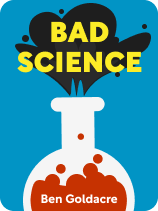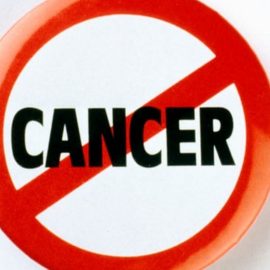

This article is an excerpt from the Shortform book guide to "Bad Science" by Ben Goldacre. Shortform has the world's best summaries and analyses of books you should be reading.
Like this article? Sign up for a free trial here.
What is sensationalism in journalism? How does it misrepresent scientific findings?
Sensationalism is an editorial tactic that exaggerates news for the sake of writing shocking stories. According to Bad Science by Ben Goldacre, this practice can potentially misrepresent scientific information.
Here’s why journalists need to be cautious about sensationalizing stories about science.
Sensational Stories
Journalists misrepresent scientific information to the general public by using sensationalism in journalism. Goldacre notes that this isn’t unique to science journalism, but is a more general problem with journalism. To maximize readership and revenue, publications often encourage their reporters to write shocking, provocative stories, even if it means exaggerating. However, because science journalism impacts public health, sensational science reporting can cause significant harm.
(Shortform note: While Goldacre primarily blames the media for sensationalizing science, some members of the scientific community argue that scientists themselves may be equally to blame. Seeking to bring themselves acclaim and notoriety, researchers and institutions may exaggerate their findings to the media.)
As Goldacre describes it, journalists tend to focus on scary findings because they’re seen as better attention grabbers. For instance, stories about common household chemicals causing cancer are more likely to attract readers than stories about incremental advancements in treating lactose intolerance. It isn’t inherently misleading to publish frightening stories, as long as those stories are accurate, but sadly this isn’t always the case.
(Shortform note: While scary stories may benefit publications in the short term, they may have negative impacts in the long run. Studies have shown that sensational stories cause consumers to become distrustful and apathetic toward news media, leading them to consume less news. At scale, growing distrust in news media likely hurts circulation for many publications.)
Spotting Sensationalism
If you think a certain publication is exaggerating in order to play upon your fears, look into the rest of their health and science reporting. If they tend to publish only negative, frightening stories, they probably aren’t giving you all the information.
Additionally, you should pay close attention to the way journalists report statistics. Often, stats are presented misleadingly to make research results sound more dramatic than they really are.
(Shortform note: Misleading statistics are not unique to science journalism. Business leaders note that issues with stats are rampant in the business world. As in science, these errors are usually due to the financial interests of researchers and journalists. It’s simply more exciting to readers to publish a story about dramatic success or failure, in both science and business.)
Specifically, Goldacre notes that journalists tend to reference relative risk increase out of context. Relative risk increase is the percentage increase in risk of a certain phenomenon. Citing relative risk increase without including hard data, such as case numbers and death counts, can make small increases in risk appear very large.
For example, suppose that a new treatment causes appendicitis risk to go from one patient per thousand to two patients per thousand. Expressed in terms of relative risk, that’s an increase of 100%, which sounds a lot scarier than an additional one case per thousand patients. Because of this effect, if an article references relative risk, you should refer back to the article’s sources and check the numbers out yourself.
(Shortform note: Because of the misleading nature of relative risk increase, some researchers recommend ignoring risk increase entirely. Instead, they argue that you should focus only on the hard numbers that affect patients, such as clinical outcomes and cost.)

———End of Preview———
Like what you just read? Read the rest of the world's best book summary and analysis of Ben Goldacre's "Bad Science" at Shortform.
Here's what you'll find in our full Bad Science summary:
- The strategies researchers, corporations, and journalists use to mislead the public
- The tools you need to identify and call out shady science when you see it
- Why media outlets have an ethical obligation to publish retractions






